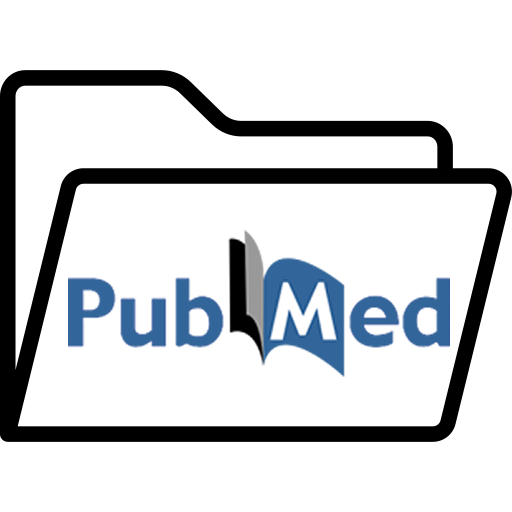Mardin Artuklu Üniversitesi Kurumsal Akademik Arşivi
DSpace@Artuklu, Mardin Artuklu Üniversitesi tarafından doğrudan ve dolaylı olarak yayınlanan; kitap, makale, tez, bildiri, rapor, araştırma verisi gibi tüm akademik kaynakları uluslararası standartlarda dijital ortamda depolar, Üniversitenin akademik performansını izlemeye aracılık eder, kaynakları uzun süreli saklar ve yayınların etkisini artırmak için telif haklarına uygun olarak Açık Erişime sunar.

Güncel Gönderiler
Effects of acute carbon monoxide posioning on liver damage and comparisons of related oxygen therapies in a rat model
(Taylor & Francis, 2024) Gökdemir, Gül Şahika; Şeker, Uğur; Demirtaş, Berjan; Taşkın, Seyhan
Acute carbon monoxide (CO) poisoning may cause liver damage and liver dysfunction. Therefore, in this study, we aimed to compare the efficiency of normobaric (NBO) and high flow nasal cannula oxygen (HFNCO) treatments on liver injury. For that purpose, twenty-eight male Wistar albino rats were divided into four groups (Control, CO, CO + NBO, CO + HFNCO). The control group was allowed to breath room air for 30 min. Acute CO poisoning in CO, CO + NBO, CO + HFNCO was induced by CO exposure for 30 min. Thereafter, NBO group received 100% normobaric oxygen with reservoir mask for 30 min. HFNCO group received high-flow oxygen through nasal cannula for 30 min. At the end of the experiment, all animals were sacrificed by cardiac puncture under anesthasia. Serum liver function tests were measured. Liver tissue TAS, TOS and OSI levels, tissue histomorphology and immunoexpression levels of Bax, Caspase 3, TNF-α, IL-1β, and NF-κB were also examined. Our observations indicated that acute CO poisoning caused significant increases in blood COHb, serum AST, ALT, ALP, total protein, albumin, globulin levels but a decrease in albumin to globulin ratio (all, p < 0.05). Furthermore, acute CO poisoning significantly increased the OSI value, and the immunoexpresssion of Bax, Caspase 3, TNF-α, IL-1β, and NF-κB in liver tissue (all, p < 0.05). These pathological changes in serum and liver tissue were alleviated through both of the treatment methods. In conclussion, both the NBO and HFNCO treatments were beneficial to alleviate the acute CO poisoning associated with liver injury and dysfunction.
The nephroprotective effect of Quercetin in Cyclophosphamide-induced renal toxicity might be associated with MAPK/ERK and NF-κB signal modulation activity
(Taylor & Francis, 2024) Şeker, Uğur; Kavak, Deniz Evrim; Dokumacı, Fatma Zehra; Kızıldağ, Sefa; İrtegün Kandemir, Sevgi
The present study aimed to examine the protective effect of quercetin (QUE) on cyclophosphamide (CTX)-induced nephrotoxicity. For that purpose, 24 mice were divided into four groups (Control, QUE, CTX, and CTX + QUE). The CTX and CTX + QUE groups received 200 mg/kg of cyclophosphamide on the 1st and 7th days. The QUE and CTX + QUE groups were treated with 50 mg/kg of quercetin daily for 14 days. At the end of the experiment, the animals were sacrificed, and kidney samples were analyzed. The results indicated that CTX leads to severe morphological degenerations and disruption in renal function. Serum BUN, Creatinine, Uric acid, tissue Bax, Caspase 3, TNF-α and IL-1β expression levels were upregulated in the CTX group compared to Control and QUE groups (p < 0.05). Although MAPK/ERK phosphorylation level is not affected in CTX group, there was a significant increase in CTX + QUE group (p < 0.05), but the NF-κB was significantly suppressed in this group (p < 0.01). The RT-qPCR results showed that the cyt-c and the Bax/Bcl-2 ratio mRNA expression folds were upregulated in the CTX group (p < 0.01), which was downregulated in the CTX + QUE group. However, there was a significant difference in the CTX + QUE group compared to the Control and QUE groups (p < 0.01). The findings showed that administering quercetin along with cyclophosphamide alleviated renal injury by regulating apoptotic and inflammatory expression. Moreover, the administration of quercetin and cyclophosphamide could synergistically improve renal function test results, and activate cellular responses, which upmodulate MAPK/ERK phosphorylation and suppression of NF-κB.
Negotiation, Speed, Politics: Use of Digital Technologies in International Mediation
(İstanbul Üniversitesi, 2024) Ateş Burç, Safiye
The super -accelerated (high-speed) life experiences and coercive practices of the new world order (Covid and post-Covid periods) have affected and changed the negotiation and conflict resolution skills of international actors. Today, with the pandemic and technological developments, acceleration has become a necessity in many fields. Many international mediators, especially the United Nations (UN), have also benefited greatly from digital technologies that pierce space and time during the most severe times of the Covid-19 pandemic. So, in today's world, where economic, social and technological development continues at high speed, should negotiations and policies keep pace? If so, how should accelerated and virtualised political practices be discussed over conflict resolution? What is the impact of digitalisation on international mediation? This article critically discusses the relationship between digitalisation, speed, politics and conflict resolution through content and discourse analysis of political reports on peacemaking practices of different UN missions, especially during the most traumatic period of the pandemic (March 2020 -March 2021). The study concludes that politics and negotiations need speed barriers because they need time, but they cannot be isolated from the developments and space of the high-speed society, so they need to follow the virtual space at all times and get involved when needed. As the analyses of the missions' reports show, the effective use of digital technologies, especially during the pandemic, has led to a rapid transformation in mediation (from traditional to cyber-mediation) and conflict resolution activities have been able to continue uninterrupted, but the dangers of digitalisation have not disappeared
Görsel Belgelerle Maraş Kalesi'nin Tarihi ve Önemi
(2024) Paköz, Aslıhan Ece; Oltulu, Ersel
Maraş Kalesi'nin sahip olduğu tarihsel özelliklere dikkat çekmeyi ve korunmasına katkı sağlamayı amaçlayan bu çalışmada özellikle görsel belgeler üzerinden Maraş Kalesi'nin değişimi incelenmektedir. Kahramanmaraş şehir merkezinde bulunan Maraş Kalesi, şehrin beş bin yıllık tarihsel sürecine tanıklık eden bir kültürel mirastır. Kaledeki ilk yerleşmeler en azından İlk Tunç Çağının başlarına kadar gitmektedir. Geç Hititler dönemi arkeolojik kalıntılarını barındıran, Roma dönemi surları ile çevrelenen Maraş Kalesi, sahip olduğu bu değerlerin yanında Dulkadiroğlu döneminden bugüne geleneksel şehir merkezini tanımlamasıyla da kent hafızasında önemli bir yere sahiptir. Çalışmada öncelikle kalenin eski fotoğraflarına ve gravürlerine ulaşılmıştır. Bunun yanında tarihi ve mimarisiyle ilgili literatür taraması yapılarak bu konularda edinilen bilgiler yerinde yapılan gözlemlerle birlikte değerlendirilmiştir. Yapılan çalışmada Maraş Kalesi'nin, tarihsel süreç içerisinde farklı işlevlerle kullanıldığı ve birçok değişikliğe uğradığı tespit edilmiştir.
Effects of ketamine on penile tissues in an experimental priapism model in rats
(Ali Cangül, 2024) Kölükçü, Vildan; Gürler Balta, Mehtap; Tapar, Hakan; Karaman, Tuğba; Karaman, Serkan; Ünsal, Velid; Gevrek, Fikret; Yalçın, Kenan; Fırat, Fatih
Background: This study aimed to evaluate the histopathological and biochemical effects of ketamine on penile tissues following ischemia-reperfusion injury induced by priapism.
Methods: Twenty-four male rats were randomized into three groups. Group 1 served as the control group. Group 2 underwent the priapism model to induce ischemia-reperfusion injury. Group 3, the treatment group, experienced a similar ischemia-reperfusion model as Group 2; additionally, 50 mg/kg of ketamine was administered intraperitoneally just before reperfusion. Blood biochemical analyses and penile histopathological evaluations were performed.
Results: In Group 3, significant improvements were observed in all histopathological scores, including desquamation, edema, inflammation, and vasocongestion compared to Group 2 (p<0.001). Blood biochemical analyses showed that the malondialdehyde (MDA) levels were recorded as 10 in Group 2, with a significant decrease in Group 3 (p=0.013). Similarly, proinflammatory cytokine levels, including interleukin-1 beta (IL-1β), interleukin-6 (IL-6), and tumor necrosis factor-alpha (TNF-α), were found to be suppressed in Group 3 compared to Group 2 (p=0.003, p=0.022, and p=0.028, respectively). Antioxidant enzyme activities, such as glutathione peroxidase (GSH-Px) and superoxide dismutase (SOD), were higher in Group 3 compared to Group 2 (p=0.016 and p=0.024, respec-tively).
Conclusion: Ketamine is an effective anesthetic agent in alleviating the effects of penile ischemia-reperfusion injury.




















